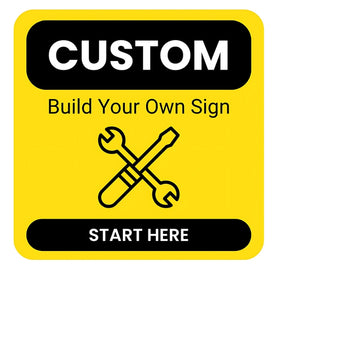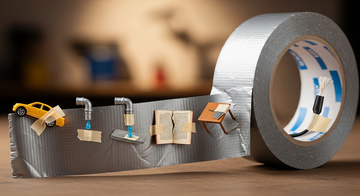As sustainability and energy efficiency take centre stage in facility management, solar lighting has become an increasingly popular solution for outdoor spaces. Whether you're lighting up a pedestrian pathway, increasing visibility in a carpark, or securing an industrial site, solar lights offer a reliable, cost-effective and eco-friendly option.
In 2025, the market is full of improved solar technology - from more efficient panels to longer-lasting batteries and enhanced motion sensors. But with so many products out there, how do you choose the best fit for your site?
This guide breaks down the best types of outdoor solar lights for different environments and what to look out for when upgrading your lighting infrastructure.
Why Choose Solar Lighting?
Before we get into the specifics, let’s look at why these lighting has become such a smart investment for both commercial and industrial use:
-
Zero running costs – Solar lights use energy from the sun, significantly reducing electricity bills.
-
Easy installation – No trenching or wiring required. Ideal for remote or hard-to-access areas.
-
Environmentally friendly – A great way to reduce your carbon footprint.
-
Reliable – Many modern solar lights operate even in cloudy conditions and offer multiple nights of backup.
At eSafety Supplies, we’ve curated a range of high-quality lighting solutions designed specifically for Australian conditions and regulations.
1. Solar Bollard Lights for Pathways
Pathway lighting is essential for safety and accessibility - especially in public areas, schools, and corporate campuses. These are the perfect fit for this purpose. With a sleek design, downward-facing light, and minimal glare, they enhance visibility without affecting surrounding environments.
The best solar bollard lights offer:
-
Dusk-to-dawn automation
-
Weather-resistant housing
-
Anti-vandal features
-
Long battery life and efficient solar panels
Our solar bollard lights are ideal for walkways, gardens, and footpaths, providing consistent performance and a modern aesthetic.

2. Heavy-Duty Solar Lights for Carparks
Carparks require wide-area lighting to ensure driver and pedestrian safety, particularly during early mornings or after dark. Traditional lighting solutions can be expensive to install and maintain, especially in open-air or rural sites.
That’s where solar floodlights and pole-mounted options come in. These outdoor solar lights are designed for broader coverage and enhanced brightness, making them ideal for both commercial and council-managed carparks.
Key features to consider:
-
Motion sensors to conserve battery when not in use
-
High-lumen output for clear visibility
-
Mounting flexibility on poles, walls, or posts
-
Durable and tamper-proof casing for added security
Installing these lighting in carparks is not only cost-effective—it also boosts safety for staff, customers, and visitors while meeting lighting compliance standards.

3. Industrial-Grade Solar Lighting for Work Sites
For industrial locations such as warehouses, factories, or large-scale infrastructure projects, lighting needs to be robust, high-performance and reliable in all weather conditions.
Industrial solar lighting typically includes:
-
High-capacity lithium batteries for extended use
-
Adjustable brightness and lighting angles
-
Smart control systems (remote or mobile app-based)
-
Resistance to corrosion, water, and UV exposure
These lights are perfect for remote or temporary worksites where grid power isn't available. They’re also useful in disaster response, mining, and defence applications.
If you're unsure which option suits your site’s layout or purpose, the team at eSafety Supplies can help tailor a solution based on your exact requirements.
4. Best Practices When Choosing Solar Lights
When shopping for the right solar lights in 2025, keep these key factors in mind:
-
Lumen rating: This measures the brightness. For carparks and industrial zones, aim for 1,000+ lumens.
-
IP rating: The higher the IP rating (e.g., IP65 or IP67), the better the water and dust resistance.
-
Solar panel efficiency: Look for monocrystalline panels for better energy conversion.
-
Battery capacity: Lithium-ion batteries tend to last longer and recharge faster than older alternatives.
-
Autonomy: Choose lights that can run for at least 2-3 nights without full sunlight.
It’s also important to consider your site's lighting layout. The distance between units, angle of illumination, and potential obstructions can all affect performance.
The Future of Outdoor Solar Lighting
In 2025 and beyond, expect even smarter lighting options - with integrated IoT controls, automatic fault detection, and battery health monitoring. These innovations will allow property and facilities managers to maintain high safety standards while further reducing energy and maintenance costs.
At eSafety Supplies, we keep up with the latest advancements to ensure our customers get durable, future-ready solutions suited to Australian conditions.
Choosing the best solar lighting for pathways, carparks, and industrial sites doesn’t have to be complicated. By understanding your space and selecting purpose-built products - like solar bollard lights for pathways or high-output outdoor solar lights for car parks - you can create a well-lit, sustainable, and safe environment without the ongoing costs of wired lighting.







